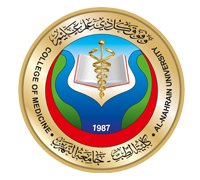|
Vol. 8 Issue 4 October - December / 2010
Published on website | Date : 2016-04-20 11:40:36
POLYTHELIA: ANATOMIC AND CLINICAL IMPLICATIONSMohammad O. SelmanAbstractBackground: Polythelia or supernumerary nipple (also called third or accessory nipple) is an additional nipple occurring in mammals including humans. These additional nipples develop during embryonic life as part of abnormal development of mammary glands.
Objectives: To describe the polythelia and it’s most frequent locations also to give a perspective of polythelia in a series of observations. And lastly to asses if there is any genetic inheritance present. Methods: Forty three cases of polythelia were collected from attendants of general practice clinic in Baghdad. The polythelia was observed during routine physical examination, which included examination of the chest and abdomen. Results: From 43 cases of polythelia, males constituted 23 (53.5%) of cases. Regarding the anatomical location of polythelia, 2(4.65%)were on the anterior axillary fold, 28(65.1%)on the anterior thoracic wall, 12(27.9%) on the anterior abdominal wall and one (2.3%) was in the inguinal region. Only five cases (11.6%)had family history of previous similar conditions. Conclusion: Polythelia is a fairly common abnormality. Men and women may have extra nipple, but no significant difference was detected that can be related to gender difference. Nevertheless presence of extra nipples was sometimes linked to heart disease, no such relationship was noticed. All cases in this study had their polythelia along the milk line. Nevertheless, there had been reports on polythelia presenting as far away as the foot. Keywords: polythelia, mammary gland, Supernumerary nipple. Full-text |
Some tools below are only available to our subscribers or users with an online account |
 |
Please wait until the current process completes ... |



